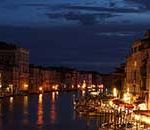Many people might know James Cameron only as the lauded director of Titanic, Avatar, and the Terminator movies, but his otherworldly adventures aren’t confined to the silver screen. He was recently awarded the Explorer’s Club Medal for his work on the oceanic submersible which allowed him to dive to the “Challenger Deep” – the deepest known point in the ocean. With this medal, he takes place among the ranks of other recipients such as Neil Armstrong and Jane Goodall. For this reason, he is being featured on the cover of National Geographic’s June 2013 issue:
In this video, photographer Marco Grob describes how he created the concept with National Geographic’s creative director Bill Marr, and all the thoughts and considerations that went into it. He then details the process he used to capture the illusion of a deep, underwater scene within the confines of his studio.
Grob solves his problem by bringing in a massive tank of water that Cameron can be fully submerged in. With the help of a few assistants, he sets up several studio strobes around the tank, including a few Elinchrom Rotalux octoboxes to cast light from the front, and some smaller, more precise lights to create ethereal beacons from the back. When he arrives, Cameron quite comfortably dons a wetsuit and crawls into the tank. Being a visual artist himself, he enthusiastically offers ideas throughout the shoot, to help solve problems that arise.

June 2013 National Geographic Cover
This style deviates a little from National Geographic’s usual reality-based photography, but it complements its subject very aptly. Between James Cameron’s legendary affinity for special effects, his hyperbolized approach to storytelling, and his attachment to new scientific possibilities, the product of this manufactured session describes not only the man, but what he is all about.
Like This Article?
Don't Miss The Next One!
Join over 100,000 photographers of all experience levels who receive our free photography tips and articles to stay current:





Where did the sand and rocks come from? Where they added in with photoshop, multiple exposures, or did they add it during the shoot and not show it in the video? Also where the back lights shot at the time of the portrait, or where they as above added later? Better than trying an on location shoot for this type of concept. On location would be a nightmare and possible not attainable. In studio, total control and safety. By the way, the tank was glass or plexiglas?
The look is great. Fantastic concept.
Where did the sand and rocks come from? Were they added in with photoshop, multiple exposures, or did they add it during the shoot and not show it in the video? Also were the back lights shot at the time of the portrait, or were they as above added later? Better than trying an on location shoot for this type of concept. On location would be a nightmare and possibly not attainable. In studio, total control and safety. Great idea. By the way, the tank, was it glass or plexiglas? The look is great. Fantastic concept.